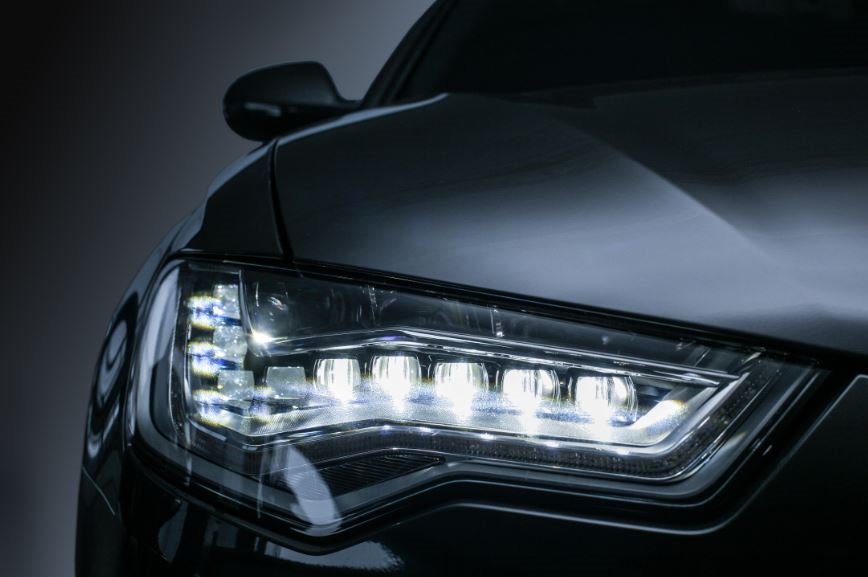SSZT834 january 2018 DLP5531-Q1 , DLP5533A-Q1
Today’s automobiles are crammed with more incredible technology than ever. From advanced head-up displays (HUDs) to powered closure systems to theater-quality rear entertainment systems, the quality and quantity of electronic creature comforts has never been greater.
One important system in car – the headlight – is undergoing rapid technological changes. The traditional halogen and xenon light bulbs are being replaced by light-emitting diode (LED) light sources. Furthermore, the advent of adaptive front-lighting system (AFS) and adaptive driving beam (ADB) headlight technology means that the headlight could soon take a big leap forward.

Infused with programmability and high resolution, a new breed of automotive headlight systems featuring leveling and swiveling headlamps, high-end sensors and programmable controllers can do much more than cast bright light in front of a vehicle. With AFS and ADB technologies, the light is not only brighter and sharper – it’s smarter, too.
Imagine that you are driving around a sharp, banked corner on a dark country road in a rainstorm. A typical headlight beam would just illuminate whatever is in front of the vehicle. AFS and ADB technologies let automakers develop more intelligent headlights that can turn with the driver’s view. This means that the light source can more accurately shift to the curving road where illumination is needed, which isn’t always necessarily straight ahead.
Here’s another scenario I’m sure many drivers have encountered. On a two-lane road, the lights from an oncoming vehicle can often be blinding. That’s not the driver’s fault, however. The headlights are incapable of doing anything but shining.
Emerging ADB technologies mean that the headlights of the very near future will be able to change their beam shape, reducing glare for oncoming drivers as well as pedestrians. In other words, the headlights will shine light only where it matters.
So, what’s driving this transition to AFS and ADB solutions? In most cases, it’s coming from automakers realizing that current headlight capabilities are not always delivering what drivers and pedestrians need. Just last year, the Insurance Institute for Highway Safety Highway Loss Data Institute conducted its first-ever headlight ratings, and found that most need improvement.
The technical capabilities of emerging AFS and ADB solutions extend beyond illumination. The flexible form factors of these new headlights will give automotive designers a new palette of creative options in the years to come.
Nevertheless, it’s an exciting time to be at places like TI, where our teams are developing a range of technologies that enable more flexible and powerful headlights for a brighter driving future.
Additional Resources
- Learn more about TI’s innovative analog and embedded processing portfolio that customers can use to design differentiated body electronics and lighting systems for any type of vehicle
- Explore how DLP® technology is used in automotive applications like high-resolution headlights and head-up displays